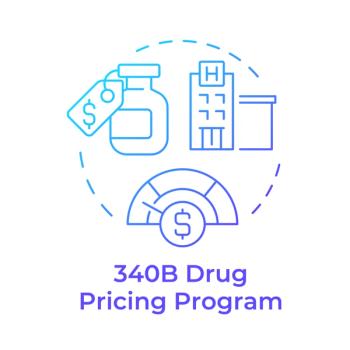
- Managed Healthcare Executive August 2019 Issue
- Volume 29
- Issue 8
Top Payer Growth Strategies
A look at what payers are-or should be-focusing on in terms of their strategy for getting customers.
Employers and consumers are looking for new solutions to the healthcare challenges being faced today, including the complexity of benefits, gaps in care and rising costs. That mindset has caused leading payers to think outside the box in their attempt to win new customers.
A sound strategy built around innovation and customer care is winning out as payers try to ensure that not only do they keep the customers they have, but bring in new ones to achieve success.
Making connections
Tom Wicka, CEO and co-founder of
“Few payers have mastered consumer engagement-historically, they haven’t had to,” he says. “But with the growth of consumerism in healthcare and the shift to value-based care, building meaningful connections with consumers has become imperative.”
Therefore, to remain competitive, he says, health plans need to take a page from leading consumer brands and adopt the consumer engagement best practices they have already perfected, including user segmentation and propensity analytics, personalized content and communication channels, and rewards that not only inspire action but build long-term trust with members.
Related article:
Christine Paige, chief marketing executive of Kaiser Permanente, an integrated managed care consortium based in Oakland, California, says one of the biggest changes over the years is the move toward greater personalization.
“There’s been an increased usage of what people have told us about their interests and preferences to make the information and dialogue more relevant,” she says. “That is different from the one-size-fits-all communication that used to prevail.”
Choosing a focus
Nick Brecker, president, specialty business for Anthem Blue Cross Blue Shield, an Indianapolis-based health insurance company, says the company’s strategy focuses on offering leading products combined with an industry-leading approach to “whole person healthcare.”
“While our specialty products (dental, vision, life and disability, and voluntary supplemental health plans) are available on a stand-alone basis, they can be packaged with our health plan products to better coordinate care, which results in more efficiencies, better health outcomes and bigger savings,” he said. “This is made possible by Anthem Whole Health Connection. This unique approach to a person’s whole health connects claims and clinical data to identify and impact gaps in care, lowers costs, and delivers a simpler healthcare experience to our consumers.”
He notes healthcare is inherently personal and Anthem Blue Cross Blue Shield’s (Anthem) Specialty business is focused on helping to make the delivery of healthcare as personalized and tailored as possible for every consumer.
“Our integrated approach to ‘whole person healthcare’ means we have the opportunity to help our consumers better manage their health conditions through early intervention and by closing gaps in their care,” he says.
John Nicolaou, a healthcare payer expert at
“The biggest focus we are seeing is on brand and service differentiation rather than product or benefit differentiation,” he says. “An example would be tools to help predict out-of-pocket payments, or to encourage and reward healthy lifestyle behaviors to help members manage their health costs.”
There are also similar avenues for employers to better manage the cost of care, including improved claim analytics or to reward healthier behaviors.
Related article:
“It will be critical to make these brand and service differentiations attractive and relevant and valuable for members, rather than gimmicks for payers,” Nicolaou says. “Key to this is to understand not just who their members are, but rather to understand their member relationships with payers and the health system overall to find ways to differentiate.”
Chris Seib, CTO and co-founder of
“According to the
Lissy Hu, CEO of Boston-based
She explains specific opportunities for payers to leverage CarePort include: guiding members to the most appropriate level of care, enabling ED diversion, tracking patients in real time to power effective transitions of care, and increasing first submission success around post-acute authorizations.
“CarePort’s vast provider footprint enables payers to most effectively and efficiently achieve visibility into member utilization and progression across settings of care, helping to drive better quality and cost outcomes and patient experiences,” Hu says. “Nearly 1,000 hospitals and more than 20,000 post-acute providers use our platform for comprehensive care transition work flows including utilization management, discharge planning, care coordination, tracking outcomes, and refining work flows.”
Direct to employer program
Stewart Schaffer, co-founder and managing partner of
“Both parties already know the many potential advantages of working face-to-face with each other so the market is prime for direct-to-employer group health plans,” he says. “All that is missing is the infrastructure, technology, and expertise to make it all happen. Our sales and marketing strategy is simply to tell the story of how the combined expertise and experience of CSuite Solutions and KBA have partnered to make this all happen.”
With that in mind, when looking to add customers, CSuite Solutions focuses on risk management, plan designs, claims processing, open enrollments, case management, care coordination, proactive health management, and overall customer service.
“You have to take an enterprise approach to delivering these programs. This is not just a network contracting exercise. By this I mean that healthcare systems have to look at these programs like they would going into a new business that is quite different from what they do now,” Schaffer says. “The simple thought that having employers as customers is a whole new world for them has to be accepted throughout the organization. We understand and facilitate cultural acceptance of these programs across the enterprise so that successful outcomes can be assured.”
Keith Loria is an award-winning journalist who has been writing for major newspapers and magazines for close to 20 years.
Articles in this issue
over 6 years ago
How Mentors Inspire Health Execsover 6 years ago
14 Ways Insurers Can Improve Patient Experiencesover 6 years ago
The Future of Healthcare Wearablesover 6 years ago
Telemedicine and E-Visits: An Updateover 6 years ago
What’s New in the MS Drug Pipelineover 6 years ago
Drug Price Reform Takes Off in 2019over 6 years ago
What Does Simple and Affordable Healthcare Look Like?over 6 years ago
Uniting Determinants and Data for Population Healthover 6 years ago
Top 3 Issues for Hospital Executivesover 6 years ago
New Report is Tackling Workplace Opioid AbuseNewsletter
Get the latest industry news, event updates, and more from Managed healthcare Executive.






















































